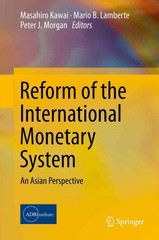| Below is an excerpt from the Bloomberg Business Week opinion "Short of Baby Formula? Blame Red Tape and Protectionism" May 23, 2022. To soaring prices, plummeting stocks, and disrupted supply chains, add another worry for US consumers: an alarming shortage of baby formula. Beyond the panic for parents, the crisis is an object lesson in how decades of protectionism can culminate in disaster. Reports of empty shelves, rationed supplies, and online scams have proliferated in recent weeks. An analysis by Datasembly Inc. found that the out-of-stock rate for infant formula surged to 43% nationwide in May, up from 11% in November. In some cities the rate exceeds 50%. Experts warn it could be months before supplies are back to normal. Two basic problems underlie the shortage, one new and one years in the making. The first was a contamination scare. In February, Abbott Laboratoriesmaker of Similac formula shut a plant in Michigan when federal regulators warned consumers that four infants had been hospitalized after exposure to its products, and two had died. (None of the illnesses has been conclusively linked to the formula.) Abbott issued a voluntary recall. Because the Michigan plant made more than half of the company's US formulaand Abbott produces some 40% of total domestic supplythe shutdown rippled across the market and worsened existing production challenges, such as labor shortages and supply chain disruptions. Policymakers could hardly be expected to predict such a series of events. But it's fair to question the Food and Drug Administration's response. Its inspectors first detected potential contamination at the plant in September 2021. A whistleblower warned of additional safety lapses in October 2021. Yet the agency waited months to act. A second, more intractable problem is that decades of bad policy have led to an unduly concentrated market. Excessive tariffs and other trade barriers have all but shut out imported formula. Even if consumers were willing to pay higher prices, the red tape the government imposes on foreign products can be prohibitive. Such measures have effectively blacklisted imports from the European Union. A program overseen by the US Department of Agriculture worsens this dynamic. The Special Supplemental Nutrition Program for Women, Infants, and Children, known as WIC, provides vouchers to low-income families to help pay for food. By some estimates, it accounts for half of all US formula sales. Over the years, formula producers have offered increasingly steep discounts to win WIC contracts, knowing that this will make retailers more likely to stock their brands and thus boost their market share. This arrangement discourages competitors from entering the market, inhibits investment, and suppresses the price increases that would normally encourage production when shortages arise. Such a system seems almost ready-made to exacerbate a supply crisis. So, what now? Abbott and the FDA have entered an agreement to restart production in Michigan, but that will take time. The FDA is working to increase formula imports, the USDA is trying to relax WIC rules to boost supply of eligible products, and companies across the industry are cranking up production. None of those steps will alleviate shortages overnight, but they're all on the right path. Over the long term, one hopes this crisis will help policymakers accept that protectionism doesn't make the economy stronger or more resilient. Quite the opposite: It diminishes competition, limits choice and capacity, raises prices, and leads to brittle and vulnerable supply chains, which, as parents are finding out, can buckle just when they're needed most. After reading the summary above, answer the following questions (2 X 5 = 10 points). - What is the driving force behind international trade - absolute advantage or comparative advantage? What is the difference between these two principles?
- What are tariffs? Who benefits and who is hurt when a tariff is imposed on a good that a country imports?
- What are some of the arguments that are put forth in favor of protectionism?
- From the article above, what are the two primary reasons that caused the baby formula shortage in the United States this year?
- How did high tariffs on baby formula imports hurt the U.S. economy during this crisis? Explain your answer.
| 





